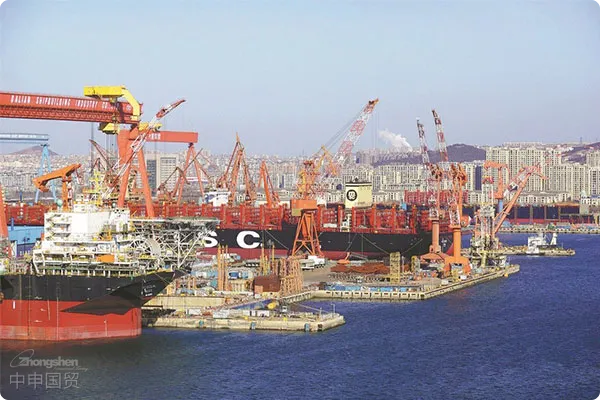- Shanghai Zhongshen International Trade Co., Ltd. - Two decades of trade agency expertise.
- Service Hotline: 139 1787 2118

Key node analysis of complete import equipment agency process
In international trade practice, machineryEquipment ImportsDue to its high value and strict regulatory nature, places higher demands on agency companies professional capabilities. The latest 2025 General Administration of Customs data shows that compliance time for mechanical and electrical equipment imports has increased by 15% on average, highlighting the professional value of procedure handling.
I. Pre-preparation for qualification review
Basic enterprise qualification requirements:
- Yesforeign tradeCustoms operator registration (requires renewal three months before expiration)
- Customsimport and exportRegistration of Consignors and Consignees of Goods
- State Administration of Foreign Exchange listed enterprise qualification
Additional requirements for special equipment:
- Pressure vessels: Special equipment manufacturing license
- Medical equipment:Medical EquipmentOperation filing certificate
II. Key points for product market access verification
New regulations for electromechanical product access in 2025:
- Accurate HS code classification (recommend reserving 10% tariff deposit)
- Import license processing period shortened to 7 working days
- 3CIndustrial robots added to certification catalog
III. Customs clearance process breakdown
Four-step clearance process:
- Declaration stage: New customs declaration form adds energy efficiency level reporting item
- Inspection stage: Customs inspection rate increased to 18.7% (January-June 2025 data)
- Tax payment stage: New VAT deduction rules require attention to invoicing timeliness
- Release stage: Destination inspection ratio increased to 35%
IV. Special logistics and warehousing management
Precision equipment transportation requirements:
- Shockproof packaging requires third-party testing report
- Temperature-controlled equipment transportation requires full-process temperature record filing
- Port temporary storage exceeding 72 hours requires warehousing plan declaration
V. After-sales filing and follow-up management
Imported equipment lifecycle management:
- Equipment usage registration filing (local market supervision bureau)
- Imported equipment ledger retention period extended to 10 years
- Annual safety inspection reports to be uploaded to commerce department system
Solutions to common problems
- HS classification disputes:Applying for advance classification ruling can reduce clearance time by 40%
- Document deficiencies:Utilizing customs voluntary disclosure system to reduce administrative penalties
- License expiration:Activating emergency channel processing can avoid demurrage fees
- Logistics delays:Applying for tariff guarantee to enable cargo advance release
Core Value of Professional Agency Services
A semiconductor equipment import case shows professional agency services can reduce clearance time by 22 days and compliance costs by 31%. Choosing an AEO-certified agency company can enjoy a 70% reduction in customs inspection rates.
With the General Administration of Customs advancing smart supervision reforms in 2025, import enterprises are advised to establish a three-phase management mechanism: pre-compliance diagnosis, mid-term risk control, and post-traceability management, achieving cost reduction and efficiency improvement throughout the equipment import process.
Related Recommendations
? 2025. All Rights Reserved. Shanghai ICP No. 2023007705-2  PSB Record: Shanghai No.31011502009912
PSB Record: Shanghai No.31011502009912










